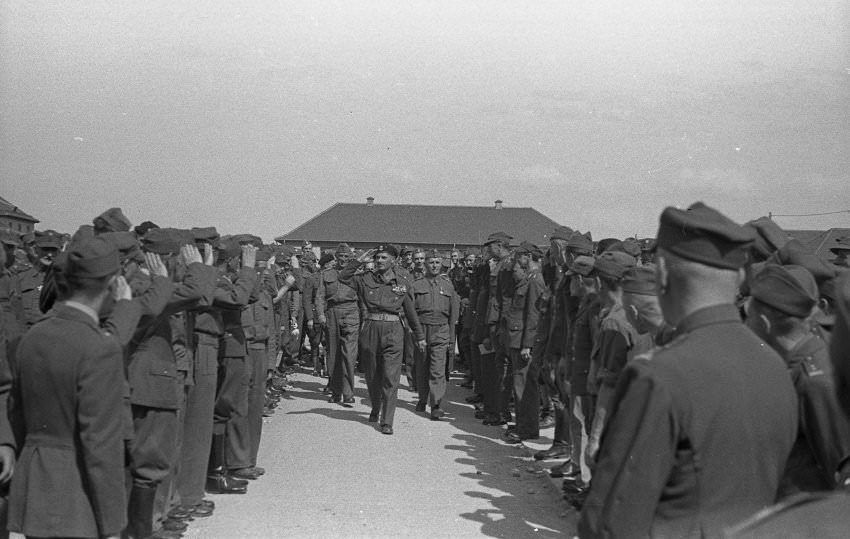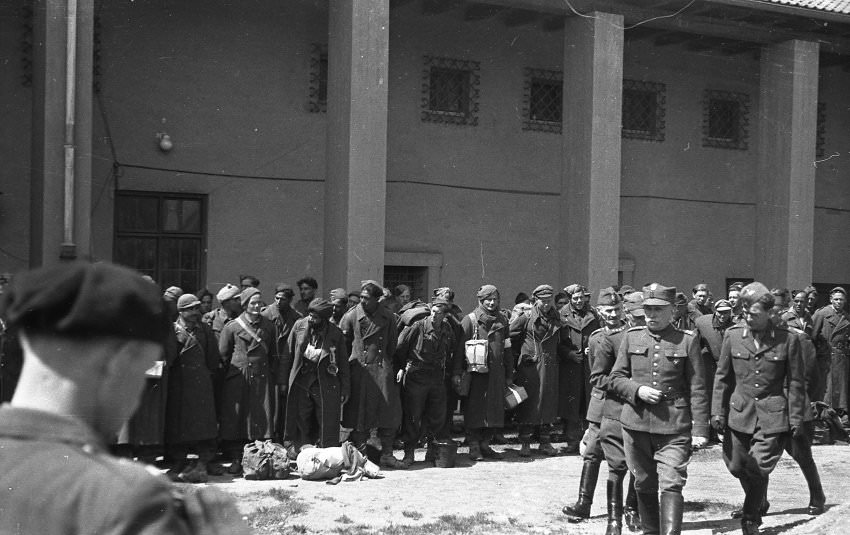It was a regular winter night in 1999 when Olivier Rempfer stumbled upon an extraordinary discovery in the southeastern French town of Cagnes-sur-Mer. A wooden box, carelessly discarded atop a trash container, caught his attention. Little did he know that the contents of this seemingly insignificant box would offer an intense look into life inside a Nazi POW camp for Polish officers during World War II.
Inside the box, Olivier found cylindrical objects wrapped in paper that turned out to be rolls of black and white 35mm film. Holding the filmstrips up to the light, he saw what appeared to be scenes from a war film – men in uniforms, barracks, guard towers, even individuals in costume onstage. Believing the images were from a movie set, he set the box aside.
Years later, the forgotten box resurfaced when Olivier’s father, Alain Rempfer, came across it. As a photographer, Alain was intrigued by the old films and in 2003, he decided to digitize the images using a film scanner. As he looked closer at the 300 or so pictures, he made a startling realization. These were not movie stills but rather historical photos from a prisoner-of-war camp during World War II. The brand name ‘Voigtländer,’ a German camera manufacturer, was written on the edge of the film, further confirming the images’ authenticity.
One of the photographs held the key to where these images were taken. It showed a truck with men seated on its bed, and upon closer inspection, Alain was able to make out the words “PW CAMP MURNAU” along with the letters “PL” painted on the truck. After a bit of research, Alain found that Murnau, a German town, was indeed home to a POW camp for Polish officers from 1939 to 1945.
Looking at the photographs, both father and son felt a profound connection to the unknown men staring back at them through the decades. As Alain Rempfer reflected, “All these young men looked right at us through the camera, during the time they lived in the camp. And we don’t know their names or what their daily life was like there, we don’t know anything about their hopes, their feelings.” The silent, haunting images stirred a desire to learn more about the lives of these men and the experiences they endured.
Motivated by their discovery, the Rempfers decided to create a website to showcase these extraordinary images. Their hope was that these photographs would not only reach history enthusiasts and scholars but also potentially connect with family members of the POWs. They believed that someone, somewhere might recognize a face, a stance, or a uniform and could provide more insight into the lives of these men.





























Prisoners shot at Americans? Any more details?
My grandfather was imprisoned at Stalag VII A for a time. This is really cool, thank you for sharing!
does anyone else find the photos of entertainment and art dissonant from what we learned about POW treatment elsewhere?
I found that dubious. Must have meant guards. Great pics, though.
These are military prisoners of the Wehrmacht and officers to boot. That is a completely different story from final solution death camps kept by the Totenkopf SS. Compare these with the death camps at Dachau and Auschwitz. POWs versus Holocaust victims.